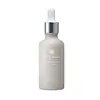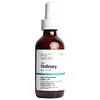What's inside
What's inside
 Key Ingredients
Key Ingredients

 Benefits
Benefits

 Concerns
Concerns

 Ingredients Side-by-side
Ingredients Side-by-side

Water
Skin ConditioningAlcohol Denat.
AntimicrobialButylene Glycol
HumectantPEG-30 Hydrogenated Castor Oil
EmulsifyingPanthenol
Skin ConditioningSwertia Japonica Extract
Skin ConditioningMorus Alba Extract
AstringentHoney
HumectantOryza Sativa Lees Extract
Skin ConditioningMelaleuca Alternifolia Leaf Extract
PerfumingSaccharomyces/Rice Ferment Filtrate
Skin ConditioningPropanediol
SolventAnthemis Nobilis Flower Extract
MaskingTocopherol
AntioxidantHydrolyzed Corn Starch
HumectantSodium Dilauramidoglutamide Lysine
HumectantDipotassium Glycyrrhizate
HumectantSqualane
EmollientMenthol
MaskingCarbomer
Emulsion StabilisingParfum
MaskingDisodium EDTA
Benzyl Alcohol
PerfumingPhenoxyethanol
PreservativePotassium Hydroxide
BufferingWater, Alcohol Denat., Butylene Glycol, PEG-30 Hydrogenated Castor Oil, Panthenol, Swertia Japonica Extract, Morus Alba Extract, Honey, Oryza Sativa Lees Extract, Melaleuca Alternifolia Leaf Extract, Saccharomyces/Rice Ferment Filtrate, Propanediol, Anthemis Nobilis Flower Extract, Tocopherol, Hydrolyzed Corn Starch, Sodium Dilauramidoglutamide Lysine, Dipotassium Glycyrrhizate, Squalane, Menthol, Carbomer, Parfum, Disodium EDTA, Benzyl Alcohol, Phenoxyethanol, Potassium Hydroxide
Water
Skin ConditioningSqualane
EmollientC12-13 Alkyl Glyceryl Hydrolyzed Hyaluronate
Arginine
MaskingAspartic Acid
MaskingGlycine
BufferingAlanine
MaskingSerine
MaskingValine
MaskingIsoleucine
Skin ConditioningProline
Skin ConditioningThreonine
Histidine
HumectantPhenylalanine
MaskingGlutamic Acid
HumectantGlucose
HumectantFructose
HumectantSucrose
HumectantPCA
HumectantSodium PCA
HumectantZinc PCA
HumectantMagnesium PCA
HumectantManganese PCA
HumectantUrea
BufferingSodium Lactate
BufferingLactic Acid
BufferingHexyl Nicotinate
EmollientLauryl Glucoside
CleansingMyristyl Glucoside
CleansingPolyglyceryl-6 Laurate
EmulsifyingIsoceteth-20
EmulsifyingDextrin
AbsorbentHexylene Glycol
EmulsifyingPotassium Sorbate
PreservativePhenoxyethanol
PreservativeChlorphenesin
AntimicrobialWater, Squalane, C12-13 Alkyl Glyceryl Hydrolyzed Hyaluronate, Arginine, Aspartic Acid, Glycine, Alanine, Serine, Valine, Isoleucine, Proline, Threonine, Histidine, Phenylalanine, Glutamic Acid, Glucose, Fructose, Sucrose, PCA, Sodium PCA, Zinc PCA, Magnesium PCA, Manganese PCA, Urea, Sodium Lactate, Lactic Acid, Hexyl Nicotinate, Lauryl Glucoside, Myristyl Glucoside, Polyglyceryl-6 Laurate, Isoceteth-20, Dextrin, Hexylene Glycol, Potassium Sorbate, Phenoxyethanol, Chlorphenesin
 Reviews
Reviews

Ingredients Explained
These ingredients are found in both products.
Ingredients higher up in an ingredient list are typically present in a larger amount.
Phenoxyethanol is a preservative that has germicide, antimicrobial, and aromatic properties. Studies show that phenoxyethanol can prevent microbial growth. By itself, it has a scent that is similar to that of a rose.
It's often used in formulations along with Caprylyl Glycol to preserve the shelf life of products.
Squalane is an emollient that helps the skin hold onto moisture. It's an oily liquid that occurs naturally in certain types of fish and plant oils.
Because squalane boosts hydration in the skin, it also comes with plenty of benefits: it is an antioxidant and can help fight free radicals and skin damage. Squalane is also found to have a detoxifying effect when applied.
Squalane comes from squalene, which occurs naturally within the sebum of our skin. It is one of the oils our skin produces to keep itself hydrated. Squalane is the hydrogenated version of squalene and has a longer shelf life.
Research shows that squalane is non-irritating (even at 100% concentration).
In general, it's a fantastic ingredient. It does a great job at hydrating the skin, and it's suitable for those with sensitive skin.
The source of squalane may impact malassezia / fungal acne. This is because olive oil derived squalane can contain impurities such as fatty acids and plant waxes. Sugarcane derived squalane is recommended for anyone with malassezia concerns.
Is squalane vegan?
This depends on the source. Squalane can be derived from both plants and animals. Most squalane used in skincare comes from plants.
Please note: the source of squalane is only known if disclosed by the brand. We recommend reaching out to the brand if you have any questions about their squalane.
Read more about squalene with an "e".
Is squalane an oil?
Squalane is often called an oil, but it’s technically not; it’s a hydrocarbon, meaning it’s only made of carbon and hydrogen, unlike true oils which are triglycerides made of fatty acids and glycerol.
The term “oil-free” isn’t regulated, so companies can define it however they want. Some exclude all oils, while others just avoid mineral oil or comedogenic oils.
While some people avoid oils thinking they cause breakouts, the right kind of oil (or oil-like ingredient like squalane) can actually help balance and hydrate your skin. It’s worth testing out simple oils or squalane to see what works best for your skin.
Learn more about SqualaneWater. It's the most common cosmetic ingredient of all. You'll usually see it at the top of ingredient lists, meaning that it makes up the largest part of the product.
So why is it so popular? Water most often acts as a solvent - this means that it helps dissolve other ingredients into the formulation.
You'll also recognize water as that liquid we all need to stay alive. If you see this, drink a glass of water. Stay hydrated!
Learn more about Water